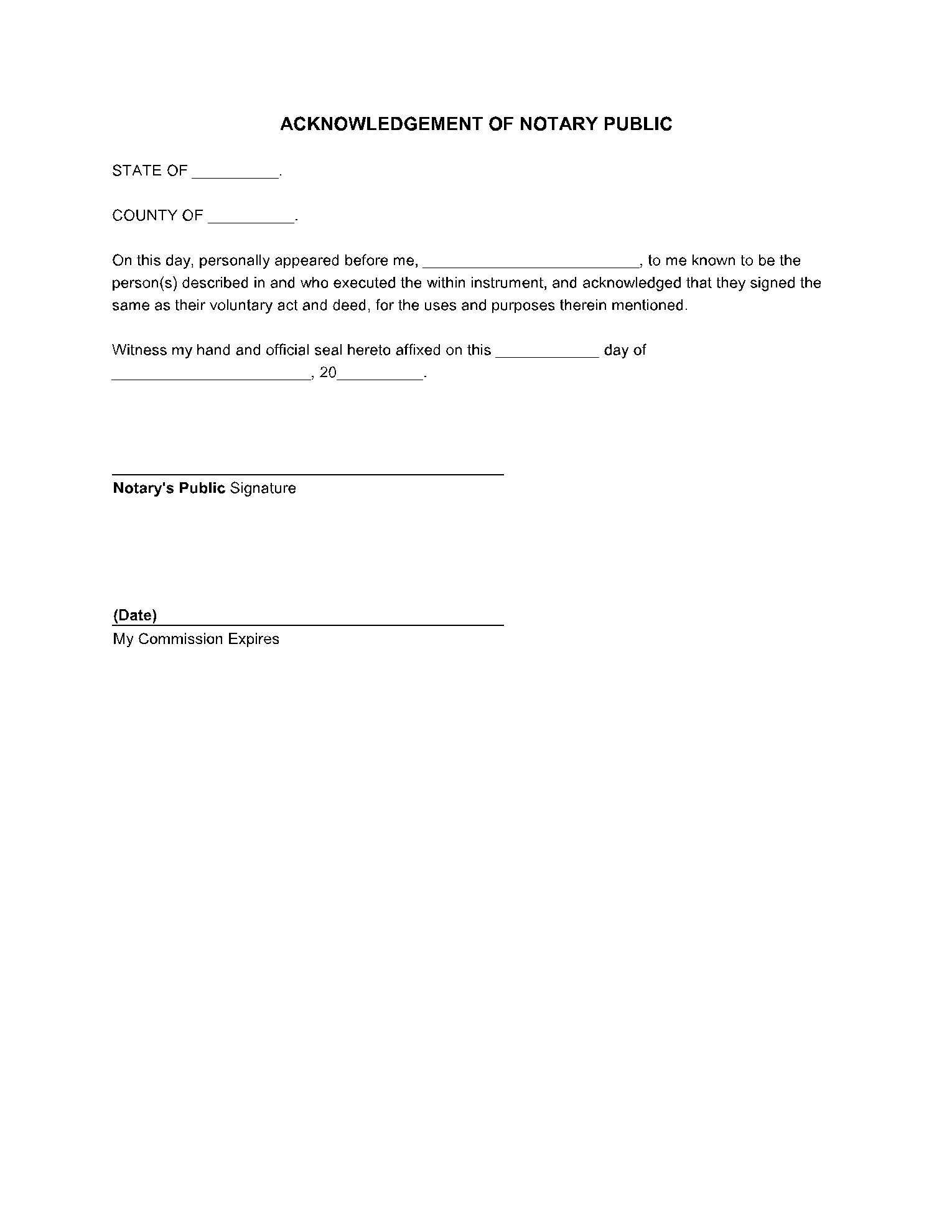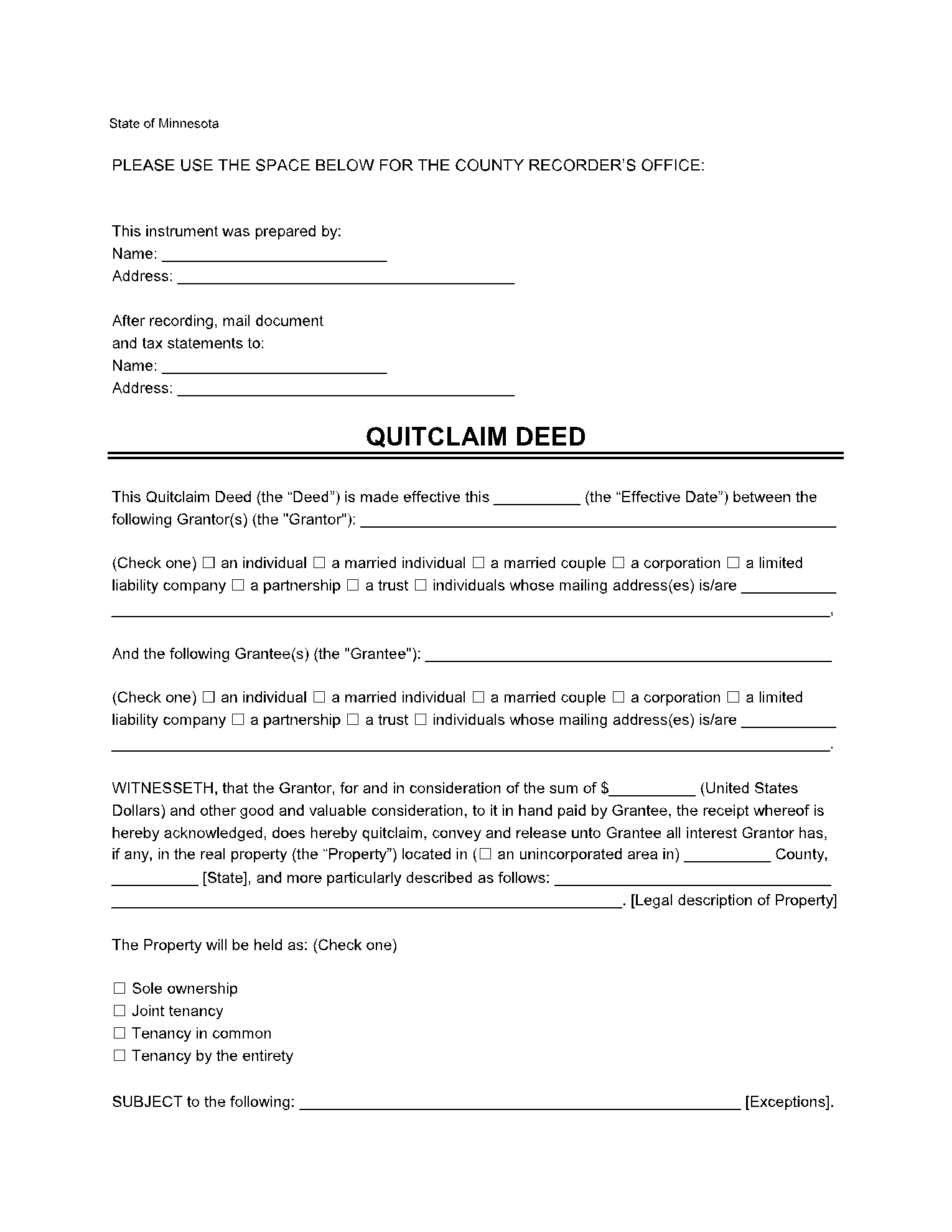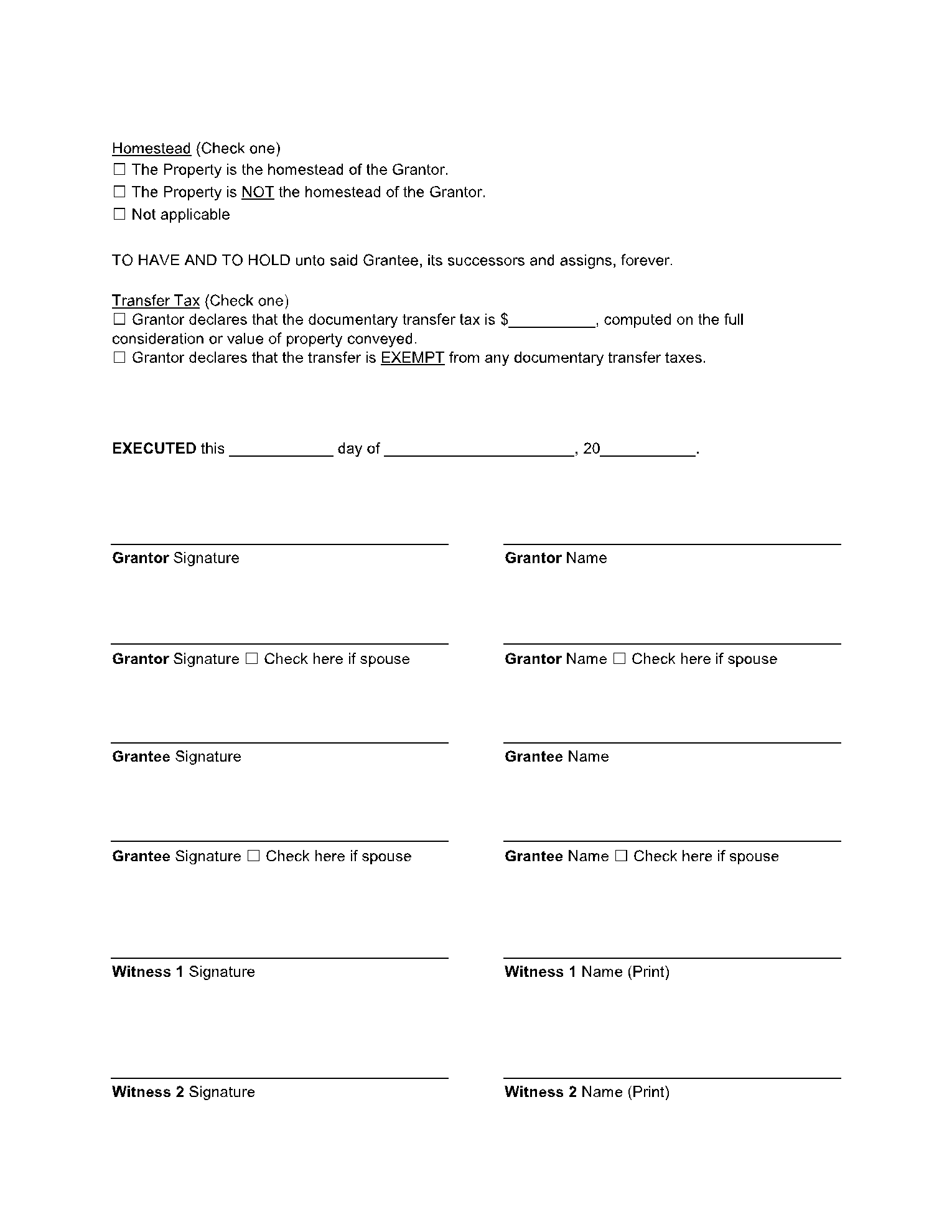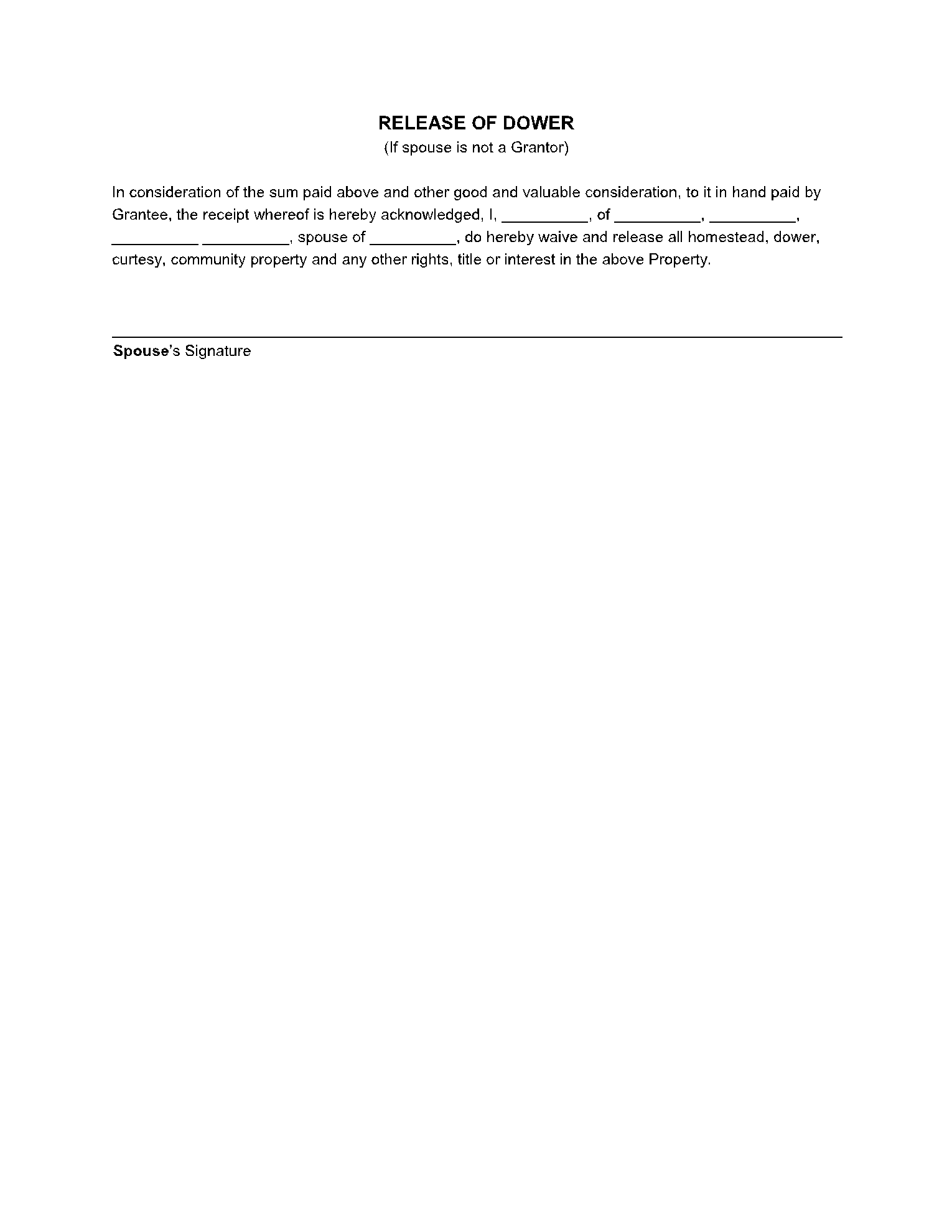There are several options when it comes to deeds issued for real estate transactions in the state of Minnesota. But when the seller doesn’t have the title or a way to prove that they are valid owners, the document they need to use is Minnesota quit claim deed.
It’s used to transfer ownership from the seller to the buyer, with an explicit mention that the buyer accepts the property without any warranty. Because of its risky nature, the quit claim deed MN is mostly used for transactions between members of the same family, when trust isn’t an issue. Even so, a thorough title search should still be conducted by the buyer.
Generally, a Minnesota quit claim deed form should include:
-
- Preparer’s details
- Mail recipient’s details
- Property description
- Price both parties agreed on
- Details of the grantor and grantee
- Signatures
- Notary
What Is a Minnesota Quit Claim Deed?
The Minnesota quitclaim deed is a legal document people use in Minnesota for real estate transactions when the title is missing or has a defect. There are two parties involved: the grantor, or the seller, and the grantee, or the buyer.
As the name suggests, the buyer quits any claim to the seller once the transaction is completed. That means that if a valid owner appears at some point, the buyer cannot hold the seller accountable based on the MN quit claim deed.
Although to many people, it may seem not worth the risk, there are quite a few instances when the quitclaim deed Minnesota is beneficial. It’s mostly used to transfer ownership to a family member, not necessarily in exchange for the actual price, and the taxes are lower.
But when the parties involved are strangers, this is the last type of deed to use, as there are others that actually offer warranty concerning the title.
When Do You Need to Use a Quit Claim Deed in Minnesota?
A deed must accompany any real estate transaction in the state of Minnesota. Without this document, the buyer cannot go through with the registration. When the seller has no proof that they are entitled to sell, the only deed they can use is the Minnesota quit claim deed.
Most people avoid this type of deed because there are alternatives that offer them the guarantees they need. But these are the situations when you may want to consider issuing a quit claim deed MN:
- If you want to transfer a piece of property to your child or one of your siblings
- If you got married or divorced and need to add or remove a spouse from the title
- If you want to leave a real estate property to a relative without a living will
- If you want to sell your part of a property to your co-owner
- If you are the unique owner of a property and want to turn it into a co-ownership
- If you want to buy a piece of real estate from someone and you trust them enough to agree to the purchase without any warranty
What Are the Requirements for the Minnesota Quit Claim Deed?
Despite being a document that doesn’t provide any guarantee to the buyer, the quitclaim deed Minnesota is still a legal form and has to meet specific requirements. The first one is that it needs to be notarized, which isn’t surprising given the acknowledgment it contains.
Another requirement concerns the properties that are declared to be worth more than $1,000. In all these cases, Minnesota quit claim deed must be accompanied by an eCRV or electronic Certificate of Real Estate Value. Keep in mind that the consideration includes any amount of debt the buyer assumes.
If there is a new well on the property, installed while the seller was in physical possession of the property, the Minnesota quitclaim deed must be accompanied by a Well Disclosure Certificate.
Once signed and notarized, the quit claim deed MN must be taken to the County Recorder’s Office for registration. But before that happens, you must make sure your Minnesota quitclaim deed is complete and accurate. Here are the elements that need to be included:
- Name and address of the preparer (the person writing the deed)
- Name and address of the Mail Recipient, to whom the County Clerk will send the document after registration
- The County in Minnesota where the property is located and the quitclaim deed is filed
- The consideration (the price of the property)
- The name and address of the grantor and the grantee
- The address and legal description of the property
- Names and signatures of all parties involved
- The notary public handles the last part of the document and affixes their state seal
Conclusion
The quit claim deed MN is the document people use in Minnesota for real estate transactions with no warranty concerning the title. It’s usually chosen by members of the same family, as they trust each other and know the history of the property they are buying.
Despite the lack of guarantees, Minnesota quit claim deed is still a formal document and needs to be issued with attention to details. To make sure your Minnesota quitclaim deed is correct, try the template we have created at CocoSign. We have a lot of experience with templates for all sorts of documents and provide efficient and user-friendly forms.



